Publisher(s) Square Enix Artist(s) Kimihiko Fujisaka Initial release date 22 April 2010 Developer Cavia Genre Action role-playing game | Producer(s) Yosuke Saito Mode(s) Single-player Series Drakengard Director Taro Yoko Platforms PlayStation 3, Xbox 360 | |
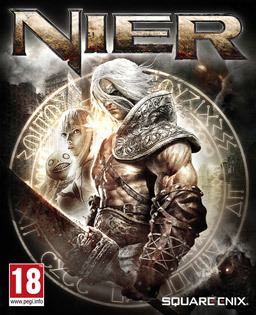 | ||
Writer(s) Sawako Natori
Kikuchi Hana Composer(s) Keiichi Okabe
Kakeru Ishihama
Keigo Hoashi
Takafumi Nishimura Similar Drakengard games, Square Enix Holdings games, Action role-playing games | ||
Nier (stylized as NieR) is an action role-playing video game developed by Cavia and published by Square Enix for the PlayStation 3 and Xbox 360. In Japan, the game was released as Nier Gestalt (Japanese: ニーア ゲシュタルト, Hepburn: Nīa Geshutaruto) for the Xbox 360, while an alternate version entitled Nier Replicant (Japanese: ニーア レプリカント, Hepburn: Nīa Repurikanto) was released for PlayStation 3 with a younger main character. A version that combined elements from both releases was in development for PlayStation Vita, but was cancelled in March 2011 due to Dragon Quest X taking precedence.
Contents
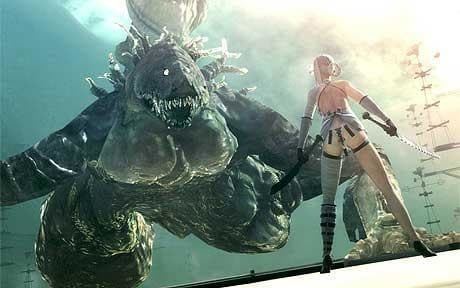
The game is a spin-off from the Drakengard series, and follows the fifth ending of the first game, the events of which have left the planet Earth in a state of decay. Set over one thousand years after this, the game puts the player in control of the titular protagonist Nier, as he attempts to find a cure for an illness, known as the Black Scrawl, to which his daughter Yonah has succumbed. Partnering with a talking book known as Grimoire Weiss, he journeys with two other characters, Kainé and Emil, as he attempts to find a remedy and understand the nature of the creatures known as Shades that stalk the world. The gameplay borrows elements from various video game genres, occasionally switching between them and the main role-playing-based gameplay.
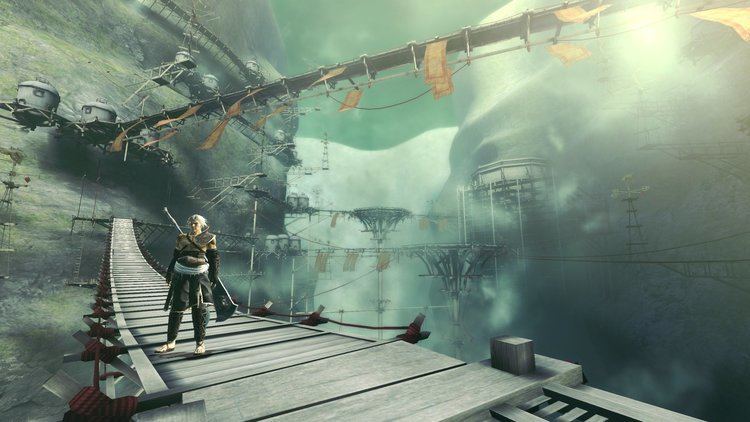
The game was developed to appeal both to older players and to players outside Japan, where the developer was based. The music was composed by Keiichi Okabe, head of Monaca, a music composition studio, and has sparked the release of several albums. Nier was released to mixed reception; reviewers praised the story, characters and soundtrack and were mixed in their opinions of how well the disparate gameplay elements were connected. The execution of some gameplay elements was criticized, notably the side quests, and especially the graphics (which were regarded as substandard). Despite this, the game acquired acclaim among players over time, becoming a cult classic. Square Enix and PlatinumGames developed a sequel titled Nier: Automata, for PlayStation 4 and PC, which was released February 23 in Japan and on March 7, 2017 in North America.
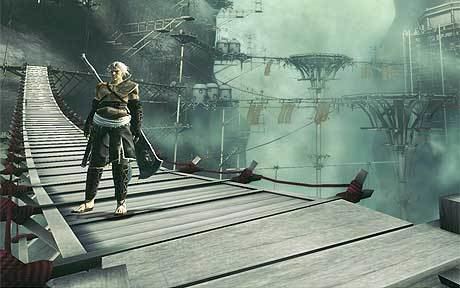
Gameplay
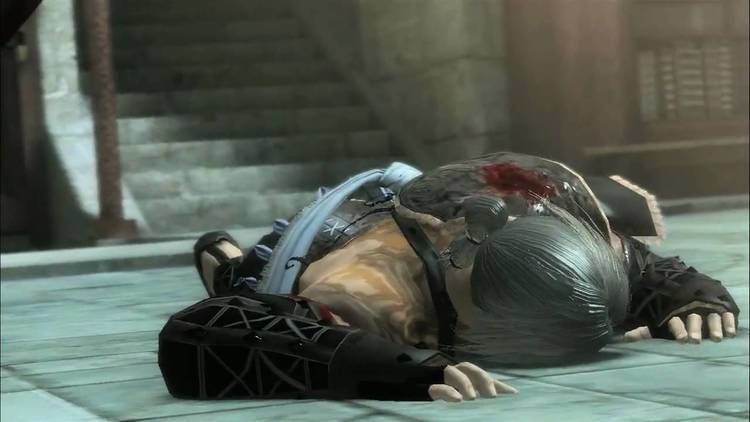
Players take control of Nier—a middle-aged man in Nier and Nier Gestalt and a teenaged boy in Nier Replicant—though the character can be renamed by the player. The player directly controls Nier through a third-person perspective to interact with people, objects, and enemies throughout the game. The player can also turn the camera around the characters, which allows for a 360° view of the surroundings. The three-dimensional world is divided into areas separated by loading screens, and the player can move freely throughout these areas by walking, running, jumping, and climbing ladders. In some rooms and buildings, the camera swings to the side and Nier is restricted to moving as in a two-dimensional platforming environment, while during certain battles the camera pulls up to simulate a top-down shoot 'em up or other video game genres.
While traveling the player is frequently attacked by monsters, which include shadowy figures called Shades, large animals, and robots. Defeating these enemies gives the player experience points that can increase Nier's power, and money that can be used to purchase items. Nier can attack these creatures with either a one- or two-handed sword, or a spear. These weapons can be customized to have greater damage and abilities using materials that can be purchased, dropped from monsters, or scavenged around the world. Multiple different varieties of each weapon type can be acquired. The player can also use magic spells, which require enough energy from a constantly regenerating amount to cast. These spells include projectiles and large shadowy fists, among others; new spells are acquired in the first half of the game by completing specific battles. In addition to the main plotline, Nier includes numerous side-quests, which give the player experience points and money, as well as fishing and farming segments.
Plot
The game opens with a prologue during the summer of 2049 in a snowstorm. In a modern, broken-down grocery store, Nier fends off attacks from ethereal monsters to protect his sick young daughter, Yonah. After defeating the monsters, he checks on Yonah, who has begun to cough badly. The game then cuts to 1,312 years later, where the player sees what appears to be the same two characters, now living in a village built upon the ruins of an old town. The low-technology village is one of several, and is surrounded by more modern ruins such as the remnants of train tracks and industrial machinery. The areas between towns are filled with monsters known as Shades that attack travelers.
As Yonah's illness, the Black Scrawl, is terminal, Nier sets out to look for a cure. As he does, Nier finds a talking book, Grimoire Weiss, which suggests that the two team up to use Weiss' magic and to find a cure for Yonah's disease. In their search, they encounter Kainé, a hot-tempered and foul-mouthed swordswoman; and Emil, a blindfolded boy whose eyes petrify anyone they see. After journeying for a time, the village is attacked by a giant shade; the battle culminates in Yonah being carried away by a master Shade that suddenly appears—the Shadowlord—who carries his own book, Grimoire Noir.
The game then jumps five years forward. Nier and the others are trying to find the parts to a key that they believe will help them locate the Shadowlord and Grimoire Noir. After defeating five Shades and assembling the key, the team go to defeat the Shadowlord. There, Devola and Popola, characters who have been guiding Nier on his quest, appear to try to stop them. They explain that over 1300 years prior, humanity faced extinction due to an incurable disease. In an attempt to survive, they separated their souls from their bodies using Grimoire Noir and Weiss. They created clones resistant to the disease, Replicants, and intended to recombine the souls, or Gestalts, with the Replicant bodies once it had died out; Devola and Popola were androids set to oversee the project. Over time, the Replicants had begun to form their own identities; while the Gestalts, or Shades, had grown aggressive to them.
Nier defeats the pair, with Emil sacrificing himself to ensure his friends' progress. The remaining group then defeats the Shadowlord, and the player discovers that he is the Gestalt form of the Nier from the prologue. Driven to protect his Yonah, he was the first Gestalt and has combined her with the Replicant Yonah. The original Yonah, however, tells the Gestalt Nier that she can hear the new Yonah inside her, and that she loves the Replicant Nier and deserves the body just as much. She vacates the body, and Nier and Yonah are reunited.
If the player plays the game again, they start just after the five-year skip. They learn about Kainé's past, including that she is intersex, which along with the death of her parents resulted in her ostracism as a child, and that she is partially possessed by a Shade. The player gains the ability to understand what the shades are saying, including the one possessing Kainé, though in-game Nier, Weiss, and Emil are still unable to. Additional cutscenes are also shown, giving the motivations and backstory behind the Shade bosses that are fought and showing them as sentient people trying to defend their friends against Nier. The ending to the second playthrough shows that Emil survives his sacrifice, and that Gestalt Nier and Yonah are reunited in the afterlife. A third playthrough presents the player with a choice in the ending to save Kainé, who is seen to be dying in agony; Nier can either kill her to end her suffering, or sacrifice his life for her. The latter choice not only erases all memory of him from the other characters' minds, shown in a final cutscene, but also deletes all of the player's saved progress, as if the game had never been played. Moreover, if the player wants to start a new game, they will be unable to enter the same name chosen for the previous playthrough for the Nier character.
Development
The concept that would become Nier was first proposed following the release of Drakengard 2 and the reveal of seventh generation consoles. The original concept was for a third entry in the Drakengard series. It was intended to be for PlayStation 3 due to the lessening importance of the PlayStation 2, which Drakengard 2 had been made for. However, as the project evolved, the original ideas were reworked and the game eventually became a spin-off from the main series. Despite this, the game's director Yoko Taro continues to think of it as the third Drakengard game. Including concept planning, the total development time lasted three years, with two years spent actually developing the game. It was initially a small-scale project, but during planning it grew into a full-fledged role-playing game. Development was handled by Cavia with help from Square Enix, who had previously provided development support for the Drakengard games. Square Enix had minimal input on Yoko's vision for the game's atmosphere and story, allowing him high creative control.
Nier is intended to be set 1000 years after the events of Drakengard's fifth ending. In this scenario, the game's protagonists Caim and Angelus travel across a dimensional boundary to fight a monstrous beast. After winning the battle and killing the monster, they are shot down by a fighter jet and killed; the remnants of their bodies cause the Black Scrawl. According to Yoko, after the dark story of Drakengard, Yoko focused on more positive themes of friendship and combined effort. Much of the game was inspired by the September 11 attacks and the War on Terror. Yoko took from it the idea of a terrible event where both sides believed they were doing the right thing, and wanted to show the player multiple perspectives of the same events. The term "Replicant" was coined by Yoko from the 1982 science fiction movie Blade Runner, although Yoko did not cite a particular source for Nier's name, passing it off as a codename that persisted through development.
The game's characters were designed by Kimihiko Fujisaka, who had previously worked on the main Drakengard series. Two character designs for the protagonist were created for Nier. The developers believed that the Japanese audience would respond more strongly to a younger protagonist, while non-Japanese audiences would prefer an adult Nier character. Other than changing Nier's appearance and modifying a few lines of dialogue to fit with Nier being a father rather than a brother to Yonah, the developers made no changes between the two versions; while it was initially believed that the older Nier was the character's original design, an interview with Yoko clarified that the young Nier was the original vision. Many characters underwent changes during development, and some needed to be cut: there were originally thirteen Grimoires, with all but three being cut: those that remained were Weiss, Noir and Rubrum. Emil's character was derived from a female character named Halua, while Kainé was originally a far more feminine type who hid her violent nature. Yonah's original Japanese name was derived from the Biblical name Jonah: this could not be taken verbatim into its localized form due to the name being associated with a man, so the name was changed to "Yonah". Kainé's character was made intersexual, since the team felt it fitted in with many other aspects of her gritty backstory. Kainé's status as an intersexual caused some commotion in western territories, which is something the team did not actively intend. Yoko attributed the original suggestion to female staff members working on the game.
The combat and action elements of Nier were inspired by the God of War series of games, which both Taro and Saito enjoyed. While the games had not been as popular in Japan as in North America, the two felt that the idea of having boss fights with different combat styles than the regular battles was an idea that would appeal to players in both regions. The changing styles, as well as the occasional changes in camera angle and movement, were meant to "accentuate [the] gap between real, modern scenery and the fantasy world" as a tie-in to the game's story. The game was meant to appeal to older players; it was intended as an action-RPG for an older market than Square Enix's action-RPG series Kingdom Hearts. This influenced the decision to have a main character in his 30s, as well as more blood and swearing than typical in a Square Enix RPG. The fusion of different gameplay styles was included as a homage to earlier gameplay styles and genres.
Nier was originally intended to be exclusive to the Xbox 360, but after deciding to also develop the game for PlayStation 3, the developers decided to further divide the Japanese release of the game. Nier Gestalt would be released for the Xbox 360, featuring the adult Nier (as in the international release for both platforms), while Nier Replicant, for the PlayStation 3, would feature the young Nier. The localizations for the game—in English, French, and German—were produced during development so that all of the versions could be released at the same time, and so that Cavia and Square Enix could solicit feedback from North America and Europe on the game so that it would appeal to players outside Japan. Nier was officially unveiled in June 2009 at the Electronic Entertainment Expo 2009 for both the PlayStation 3 and Xbox 360, to be developed by Cavia and published by Square Enix. It was directed by Yoko, and produced by Yosuke Saito of Square Enix. Due to its high violence, the game was given a CERO D rating in Japan.
Music
The soundtrack to Nier was composed by a collaboration of the studio MoNACA, directed by Keiichi Okabe and including Kakeru Ishihama and Keigo Hoashi, and Takafumi Nishimura from Cavia. Okabe served as the lead composer and as the director for the project as a whole. Okabe was brought onto the project when the concept for the game was first being devised, and worked intermittently on the soundtrack for the next three years until its release. The music for the game was generally composed entirely separately from the development of the game. The music was designed for different motifs to appear in various arrangements throughout the soundtrack, and also to convey a sense of sadness even during the "thrilling" tracks. Okabe was allowed a great deal of freedom regarding what the music was to sound like; game director Yoko Taro's main request was that he use a lot of vocal works.
The soundtrack to Nier is largely composed of melancholy acoustic pieces which heavily feature vocals by vocalist Emi Evans (Emiko Rebecca Evans), a singer from England living in Tokyo. She is the singer for the band freesscape, and had previously worked on video games such as Etrian Odyssey. In addition to singing, Evans was asked to write her own lyrics in futuristic languages. The composers gave her preliminary version of songs and the style they wished the language to be in, such as Gaelic or French, and she invented the words. Evans wrote songs in versions of Gaelic, Portuguese, Spanish, Italian, French, English and Japanese, where she tried to imagine what they would sound like after 1000 years of drifting.
Square Enix released a soundtrack album of music from the game, titled Nier Gestalt & Replicant Original Soundtrack, on April 21, 2010. The soundtrack album reached number 24 on the Japanese Oricon music charts, and remained on the charts for 11 weeks. As preorder bonuses for Nier Gestalt and Nier Replicant, two mini-albums, Nier Gestalt Mini Album and Nier Replicant Mini Album, were included. An album of arranged music, NieR Gestalt & Replicant 15 Nightmares & Arrange Tracks, was published by Square Enix on December 8, 2010. The arranged album reached number 59 on the Oricon music charts, a position it held for a week. Another album, NieR Tribute Album -echo-, was released on September 14, 2011, and an album of piano arrangements, Piano Collections Nier Gestalt & Replicant, was published on March 21, 2012.
Reception
In Japan, Nier Gestalt sold over 12,500 copies in Japan the week of its release, while Replicant sold over 60,000 and was the top-selling video game in Japan that week. Replicant sold over 121,000 copies in Japan by the end of May 2010, and ended the year with over 134,000 copies sold.
Nier received mixed reviews. Reviewers criticized the graphics, with Ryan Clements of IGN saying that "one of Nier's greatest flaws is its visuals," while GameSpot's Kevin VanOrd bemoaned the "flavorless visuals" and "lifeless environments". Dustin Quillen of 1UP.com said that the game "looks downright primitive", while Adriaan den Ouden of RPGamer, who awarded the game a higher score than most, said that "the environments are bland and poorly rendered". The music and voice acting, however, were praised; Clements said that "both are quite excellent", den Ouden called the soundtrack "absolutely fantastic", Chris Schilling of Eurogamer said that the music was full of "memorable themes", and one of the four reviewers for the Japanese Weekly Famitsu termed it "a cut above".
Reviewers were divided in their opinion on the effectiveness of the multiple styles of gameplay presented. Seth Schiesel of The New York Times said that while "there are plenty of games that surpass it in each area," that Nier pulled all of the styles together into a "coherent, compelling whole" instead of feeling "disjointed"; he especially praised a section of the game that is presented entirely through text. Patrick Kolan of IGN Australia, however, said that while the different styles were "interesting" and one of the game's biggest strengths, they suffered from poor execution and cohesion and left the game "with split-personality disorder". Clements said that "the developers' ideas sometimes outshine the actual implementation", while highlighting the gameplay elements as part of what made the game fun. Adriaan den Ouden called out the variety as the best part of the game, likening it to a buffet table, while also acknowledging that none of the sections were "amazing" on their own and could easily be looked upon poorly.
The regular combat was reviewed as solid, if not exceptional, and the sidequests were seen as repetitive, with Quillen saying that "the side quests in Nier are about as numerous as they are totally mindless," VanOrd calling them "a series of monotonous events, often connected only by long stretches of nothing," and a Famitsu reviewer saying that they "didn't see much purpose" to them. Clements said that the combat had "a fair amount of satisfaction", though players should "not expect anything too extraordinary", and Kolan termed the combat as "moderately deep". Critics gave a generally positive review to the plot and characters; VanOrd liked most of the characters but thought Nier was bland and the story "soggy", while Schiesel called the story "provocative" and "profound", saying that it "succeeds at fostering an emotional investment in its characters and in its world". Quillen said that the plot "takes some fascinating and truly original turns" and that Nier has "a supporting cast of genuinely interesting folks," and Schilling said that the story made the game "difficult to dislike". The Famitsu reviewer that viewed the game the most favorably said that he was "blown away" by the multiple endings, and that "nothing like it's been done in gaming".
In 2015, Jeffrey Matulef of Eurogamer characterized Nier as "the rare game that gets better with age". Despite "poor sales and tepid reviews", he wrote, the game had acquired a cult following, which he attributed to its "sense of wonder" due to its cryptic storytelling, mashup assortment of game mechanics and melancholy mood.
Legacy
On May 11, 2010, Square Enix released a piece of downloadable content for the game, titled "The World of Recycled Vessel". The small expansion features a series of fifteen battles with the incarnation of Nier other than the one in the specific version of the game. Nier enters the battles in a dream world accessed through a diary in his house. The expansion offers new costumes and weapons for the game. Square Enix executive producer Yosuke Saito later commented that "a number of things" related to Nier were in progress, and that an announcement could be due in 2011. The only announcement ended up not being for a new Nier video game, but instead for a live evening concert for Nier's music titled "Nier Night ~ Evening of Madness" which took place on October 28, 2011.
Nier was the last game that Cavia made; the company was absorbed into its parent company, AQ Interactive, in July 2010. In March 2011, there were plans made between Yoko and Takuya Iwasaki, one of the original producers for Drakengard, to develop a port of Nier for the PlayStation Vita at Iwasaki's company Orca. The port would have incorporated material from both versions of the game. When Orca was chosen to help develop Dragon Quest X, the project was shelved. A number of key staff from Nier's development, including director Yoko and Okabe, would later reunite to work on a new entry (Drakengard 3) in the Drakengard series from which Nier was spun off. A sequel titled Nier: Automata, developed by Square Enix and PlatinumGames for the PlayStation 4, was released in Japan on February 23, in North America on March 7 and worldwide on March 10. A PC release was also scheduled and released on March 17. Yoko, Saito and Okabe returned to their previous roles. Other staff members include producer Atsushi Inaba and artist Akihiko Yoshida.
